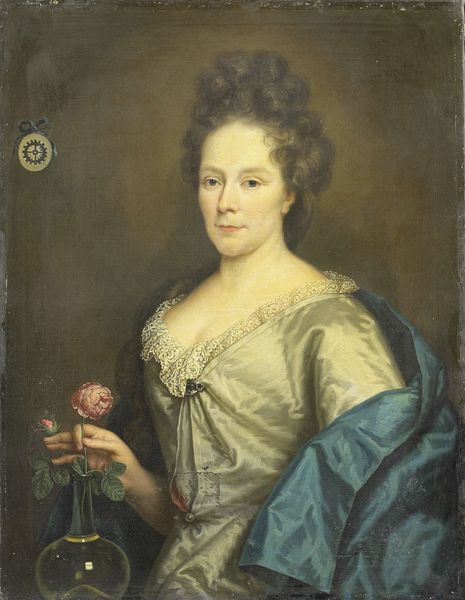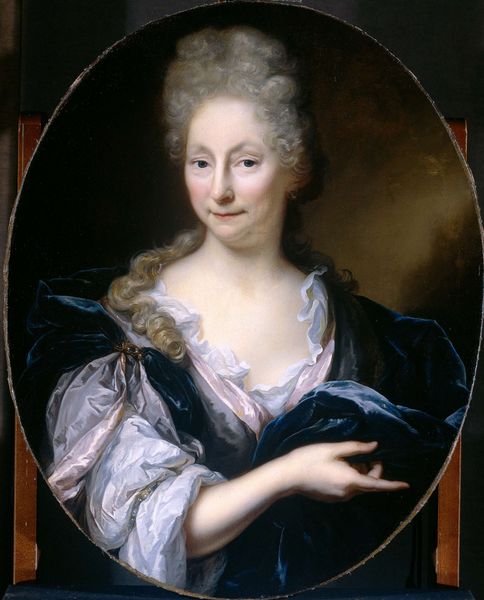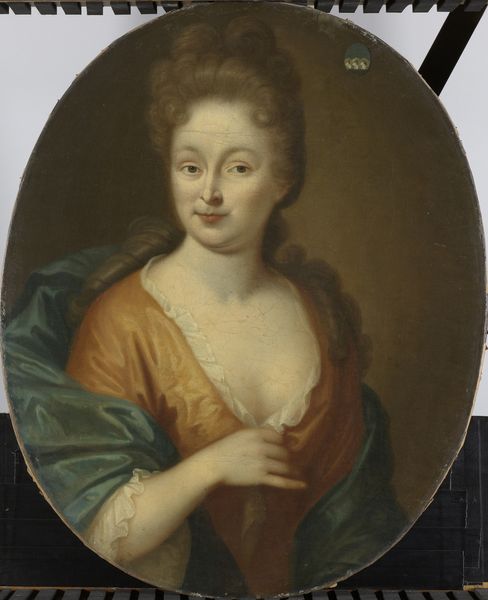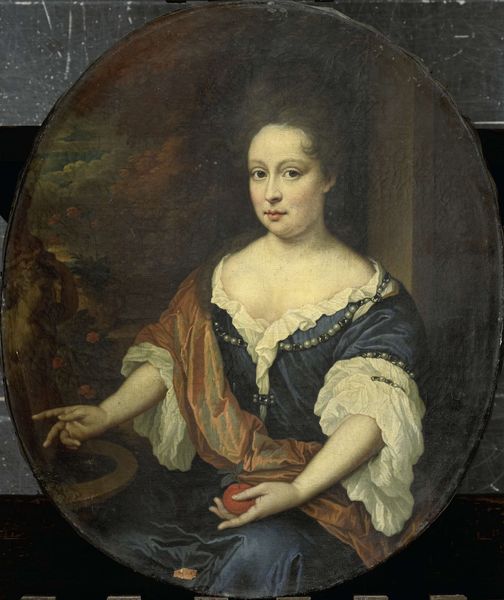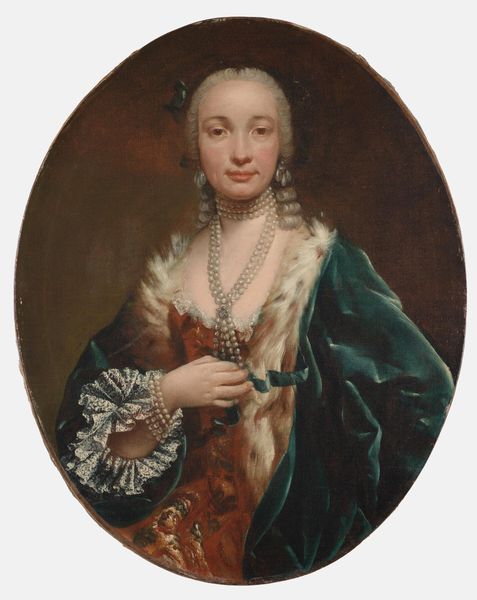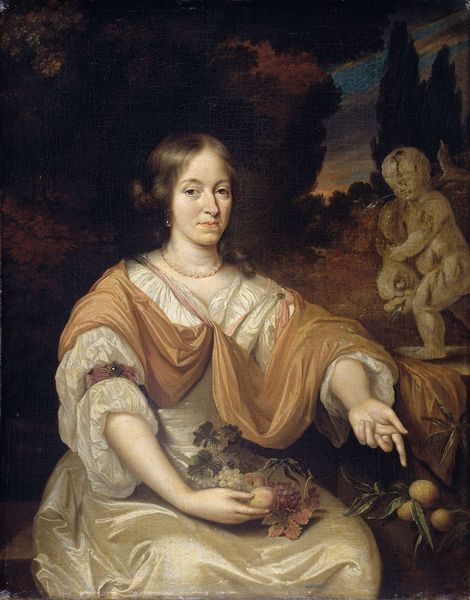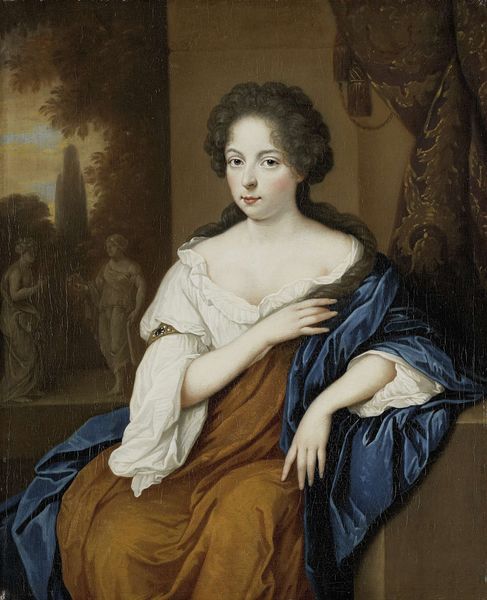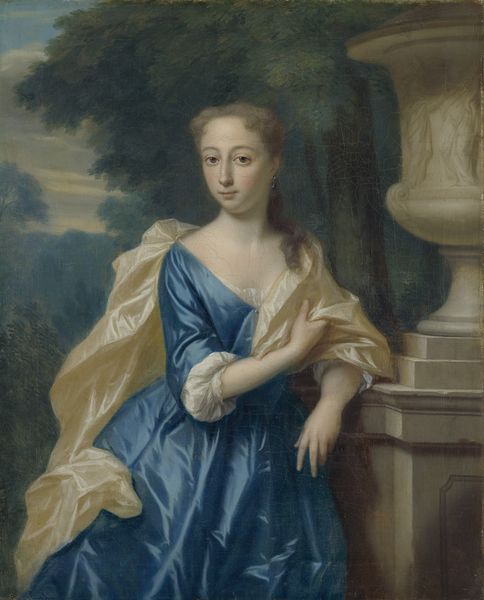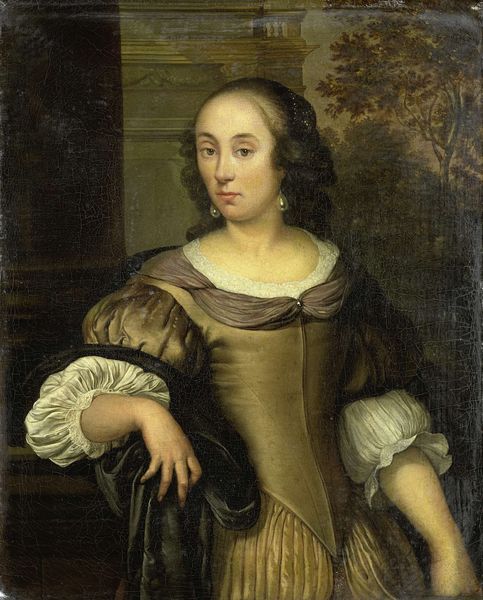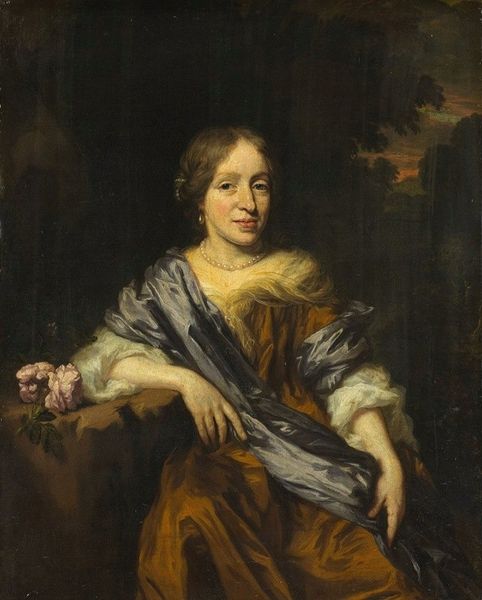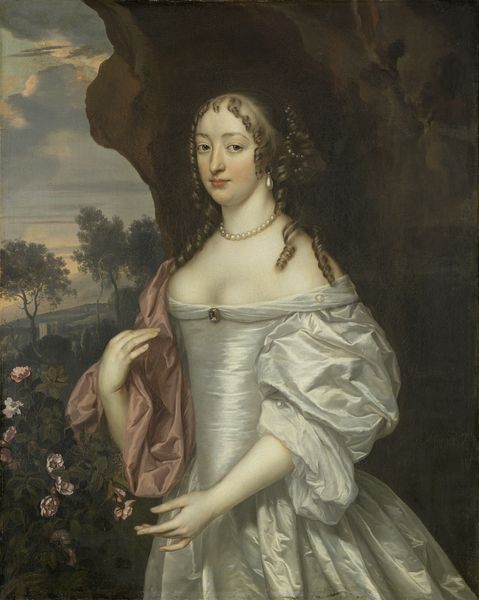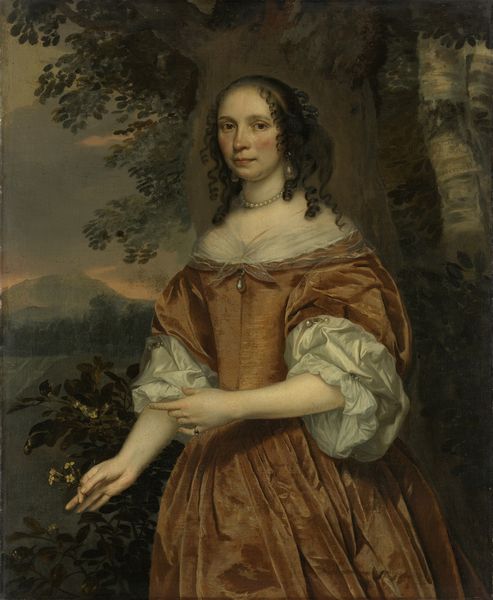
Portrait of Sabina Agneta d'Acquet, Wife of Arent van Buren 1721
oil-paint
portrait
character portrait
baroque
portrait image
oil-paint
portrait subject
portrait reference
genre-painting
portrait art
fine art portrait
Dimensions: height 102 cm, width 84 cm, depth 8 cm
Copyright: Rijks Museum: Open Domain
Curator: And now we come to Christoffel Lubienitzki's "Portrait of Sabina Agneta d'Acquet, Wife of Arent van Buren," painted in 1721. It's currently held here at the Rijksmuseum. Editor: Oh, there's a kind of wistful stillness about her. Almost as if she's caught in a thought, perhaps contemplating the rose she holds? Curator: I see that. It is interesting how Lubienitzki, who was born in Poland but moved to the Netherlands, uses oil paint to create such a detailed portrait. Look closely at the way the light catches the silk of her gown. It is very finely crafted, but also, note the kind of the restrained palette— blues and greys that would show the affluence of the sitter but were obtained through complex trade systems. Editor: Yes, those muted tones definitely speak to the wealth of the Dutch Golden Age. What fascinates me are the little details: the cascade of silk, but more interesting to me is the fact she isn't draped in jewels and pomp like so many other ladies from that era. Is there a significance, do you think, that Sabina Agneta d’Acquet chooses a singular rose in this way? Curator: Possibly. I like to imagine she loved gardening. Roses at the time were quite precious in Europe and had arrived from Asia, mostly by land across what we now call "Silk routes", after they arrived in Venice, this cultivar had spread widely in private gardens in Europe, becoming very precious objects of trade between affluent European families and it became widely used for medical purposes. A beautiful symbol and a commodity. Editor: Absolutely. And looking again at her dress...the artistry required, from the rearing of silk worms, all the way through to a team of artisans and seamstresses constructing such a beautiful garment... it really adds depth to understanding wealth and privilege in this time period, doesn't it? Curator: Precisely. It encourages you to look beyond the mere surface of things. The rose and the gown point us to those global trade and manufacture links in which Sabina, or perhaps rather her husband, was investing. What appears serene and simple speaks of labor, trade and careful symbolism. Editor: And for me, that quiet complexity, the woman, her world reflected back through a rose, speaks of things unspoken, questions hanging in the air. Curator: Yes, so a study on Dutch affluence, seen from a material point of view opens so many doors, while at the same time this Baroque artwork shows how even simple scenes such as this portrait has so much more to tell.
Comments
No comments
Be the first to comment and join the conversation on the ultimate creative platform.

